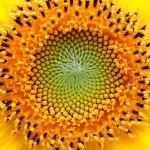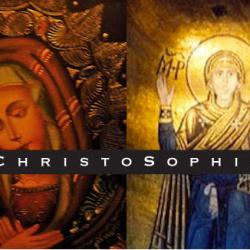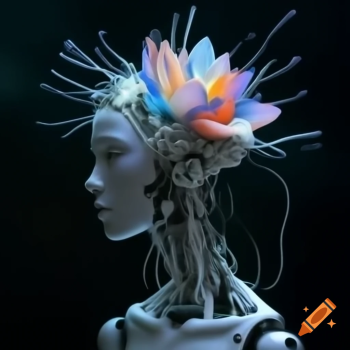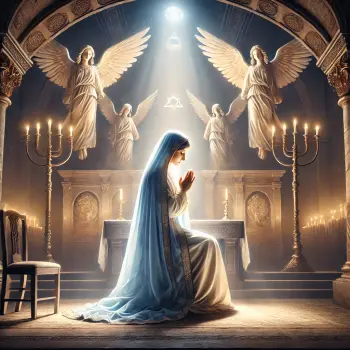The theory that Joseph Smith Jr. employed the use of psychedelics in early Mormonism was first popularized by Robert T. Beckstead, PhD., a retired professor of Emergency Medicine at Idaho State University. The cause has since been taken up by researchers Bryce Blankenagel, Alex Criddle, Cody Noconi, and Michael Winkelman who co-authored a paper with Beckstead in the Journal of Psychedelic Studies to further flesh out the theory that is gaining traction among scholars and raising the ire of LDS Church (Mormon) apologists. The debate has reached a critical point with the upcoming release of the new documentary EntheoMagus, which details the theoretical use of psychedelics in early Mormon history.
Supporters of this theory suggest that visionary experiences, critical to the foundations of Mormon doctrine, may have been facilitated by substances such as datura or psilocybin mushrooms, which were known to be available in the regions where the early Saints settled. This theory posits that the profound spiritual encounters described by Smith and his contemporaries may have been induced or enhanced by these psychoactive agents, offering an explanation for the LDS Church’s foundational divine revelations.

Watch the EntheoMagus trailer here, or the full feature on Patreon
The use of the entheogen Datura stramonium to induce spiritual experiences among groups or assemblies has a long, documented history. This may be particularly relevant when considering the Kirtland Temple dedication, where approximately 500 participants, including Joseph Smith and the early Mormon apostles, reportedly experienced visions of angels while partaking of the sacrament. Historical accounts suggest that the visionary experiences during the dedication may have been influenced by wine infused with datura or a mix of psychoactive substances. In addition, celebrated entheogen scholar Terence McKenna described the effects of Ayahuasca, a combination of two plants that produce DMT to illicit spiritual experiences, which he likened to “the sound of rushing water.” This description is uncannily similar to Joseph Smith’s description of the voice of Jehovah during the Kirtland Temple dedication, which he compared to “the sound of the rushing of great waters.”
Similarly, the vision in which Joseph Smith and Sidney Rigdon received the revelation of the Three Degrees of Glory found in Doctrine & Covenants 76, hints of psychedelic use. According to witness Philo Dibble, “Joseph sat firmly and calmly all the time in the midst of a magnificent glory, but Sidney sat limp and pale, apparently as limber as a rag, observing which, Joseph remarked, smilingly, ‘Sidney is not used to it as I am.’” One experienced in the use of psychedelics will recognize the physical effects of a classic “trip” as described here. In addition, one is also reminded of Joseph Smith’s First Vision experience in which, upon his return home from praying in the Sacred Grove, he fainted and collapsed to the ground.
The Smith family was well known for its herbal remedies and magical practices. Emma Hale, Joseph Smith’s wife, was well-known for her talented use of herbal medicines. One of her recipes was a healing salve that contained “jimson weed” or datura. Emma’s grandchildren also reported her use of psychoactive medicinal beer, ginseng, and lobelia, or “Indian tobacco”.
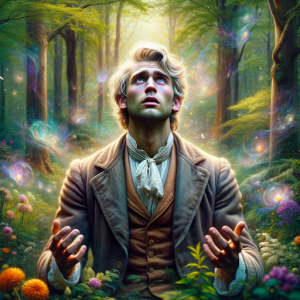
Speaking of the Smith grandchildren, Frederick Smith was the patrilineal grandson of Joseph Smith and the prophet of the Reorganized Mormon Church from 1915–1946. He was also a classically trained psychologist whose doctoral thesis extensively explored the entheogen peyote in religious contexts. In addition, Frederick published an article in the Saints Herald titled “A Trip among the Indians of Oklahoma,” in which he expressed that despite the church’s strict prohibition on alcohol, he considered peyote a powerful catalyst for authentic spiritual ecstasy. He revealed that he had personally participated in all-night peyote rituals with the Omaha and Cheyenne tribes.
Frederick Smith would go on to influence the early psychedelic research at Harvard, becoming a forerunner to the famous “Harvard psychedelic circle,” which included the likes of Timothy Leary, Ram Dass (Richard Alpert), Huston Smith, and Andrew Weil. It’s interesting and certainly ironic to note the Smith’s family’s influence on the future psychedelic culture of the United States.
While the Mormon entheogen hypothesis is speculative, it aligns with a broader understanding of religious practices globally, where entheogens have played roles in ritualistic settings to induce spiritual experiences since the beginning of recorded history. This is beautifully discussed in the research of writer Brian Muraresku in his highly acclaimed work, The Immortality Key: The Secret History of the Religion with No Name.
The theory remains controversial and is only recently receiving attention from mainstream historical and religious scholarship. Defenders of the orthodox view of the LDS Church and its history argue that there is insufficient direct evidence to conclusively link Joseph Smith and his early followers to deliberate psychedelic use. The topic shows no signs of slowing down and will continue to be a subject of debate among scholars and enthusiasts interested in the intersections of religious history and psychoactive substances.
I recently sat down with Brandon Crockett, the director of the new documentary film EntheoMagus, to further discuss the Mormon psychedelic controversy.
Q: Can you describe your current film project, EntheoMagus?
Directing “EntheoMagus” was a delicate balancing act. We aimed to introduce fresh and sometimes startling research about Joseph Smith and the origins of Mormonism without casting personal opinions on him or the Mormon religion. Given the controversial theory that psychedelics were instrumental in Mormonism’s formation and foundational truth claims, we upheld strict academic standards to ensure the narrative was credible and not dismissed as mere speculation.
The film was designed to be accessible and engaging for diverse audiences—from those unfamiliar with Mormonism to lifelong members of the faith. We also crafted the presentation of psychedelics to appeal to seasoned “psychonauts” as well as newcomers to this subject area. As someone raised within the Latter-day Saint community, I’ve found immense value in reevaluating Joseph Smith’s life and the roots of his religious movement. This exploration has opened up new perspectives and insights that were both unexpected and profoundly enlightening for my own spirituality.
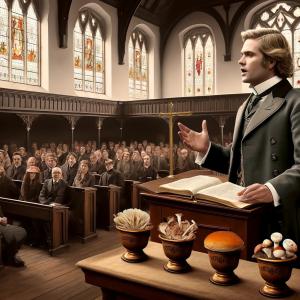
Q: Can you share your journey from being a devout Mormon to exploring psychedelics?
A: Growing up in a traditional Mormon family, I found myself grappling with doctrinal doubts from an early age. Despite my attempt to follow church teachings well into adulthood, I increasingly felt disconnected. My pivotal moment came just before my mission when I was introduced to the temple endowment ceremony, which significantly altered my view of the church. When I stumbled upon and digested the research of Dr. Beckstead in 2013 and eventually gave myself permission to experiment with magic mushrooms (psilocybin) where I had profound experiences, such as seeing deities from various world traditions. I eventually linked up with my co-producer Cody Noconi and researchers Alex Criddle, Bryce Blankenagel and Utah herbalist Marinda Bowen in order to produce the film. Exposure to the psychedelic history of Mormonism was the beginning of my journey that really took off when I left the church at the age of 34.
Q: What role did psychedelics play in your faith transition?
A: My exploration of psychedelics began after I had already started to question my faith. I was introduced to the works of Terence McKenna and others who discussed the use of psychedelics in spiritual contexts. That exposure made me realize the similarities between early Mormon visionary experiences and psychedelic experiences. It wasn’t until I delved deeper into this connection that I allowed myself to explore psychedelics personally, which opened new doors of perception for me.
Q: How has your Mormon background influenced your current spiritual and religious views?
A: Having been raised in a Mormon environment where questioning and spiritual exploration were discouraged, I now find great value in inquiry and open exploration of consciousness. That’s led me to become involved in advocacy for psychedelic substances, believing that they offer profound insights and therapeutic benefits, such as treating mental health disorders like depression, anxiety and addiction. I am currently working on other projects to educate others about the benefits of psychedelics and to promote legal changes regarding their use.
Q: How has the response been from the Mormon community and Church leaders?
A: It’s actually been largely positive. While some view these explorations as controversial or disrespectful, others have shown curiosity and support, especially when we are able to have an extended conversation and we are able to show we are not antagonistic to the faith, we are simply offering a glimpse into a new history for the genesis of the faith. The lack of official response from church authorities suggests a wait-and-see approach. However, our aim is not to provoke but to educate and facilitate understanding and healing where possible. Alongside the film, I am involved in community-building efforts among those interested in psychedelics, particularly within contexts that relate to spiritual and religious experiences.
Q: What’s next for you and the “EntheoMagus” film?
A: For “EntheoMagus,”we condensed a massive and complicated history into a short film. To give the story its due justice, we’d like to have the film made into a series on a streaming media service, such as Netflix or Hulu. I am truly proud of how far we’ve come and excited for where we’re heading. We hope that “EntheoMagus” will challenge viewers to consider new possibilities and foster a deeper appreciation for the historical use of psychedelics. We encourage those whose beliefs stem from the teachings of the Mormon Prophet Joseph Smith to adopt a more fluid approach to their faith, allowing it to flow freely rather than holding onto rigid beliefs that halt true spiritual growth.



